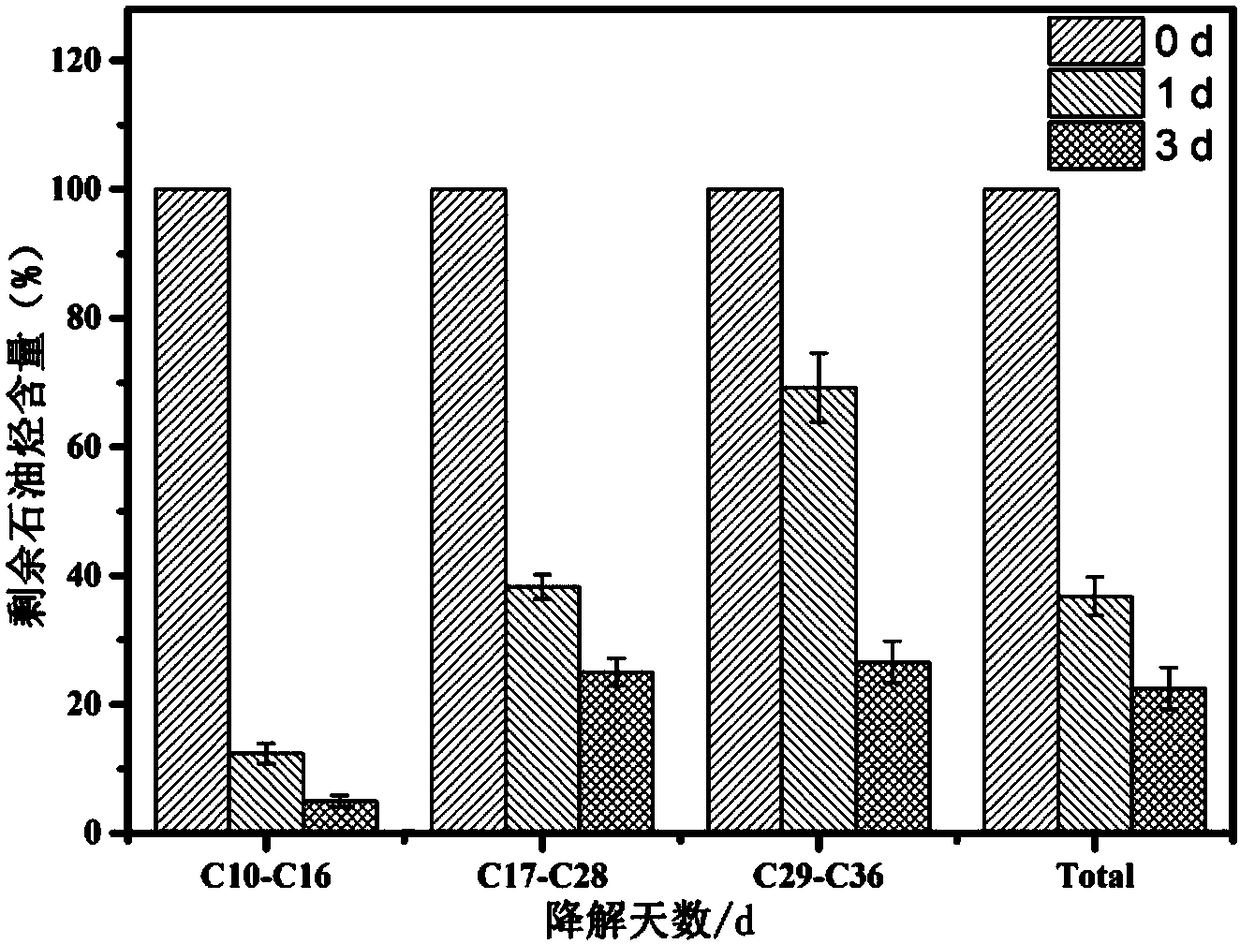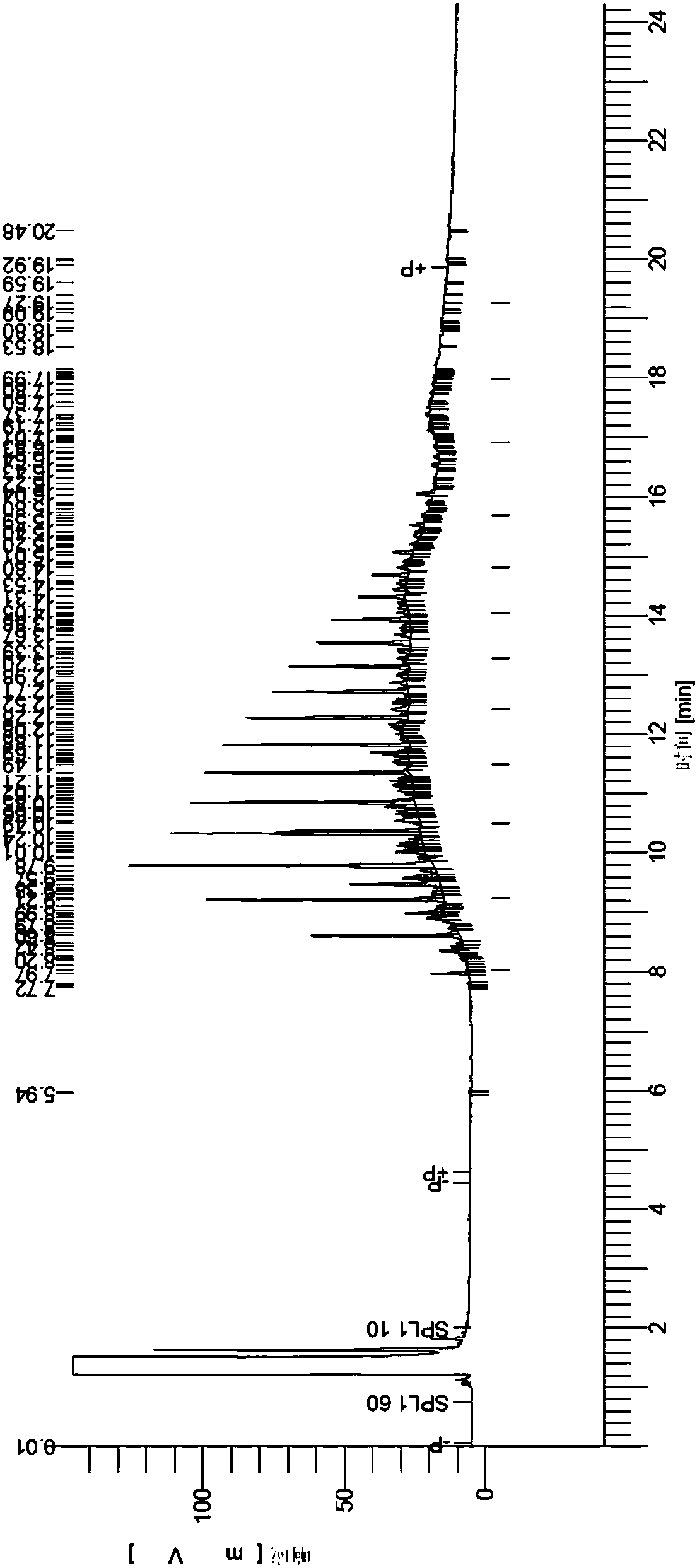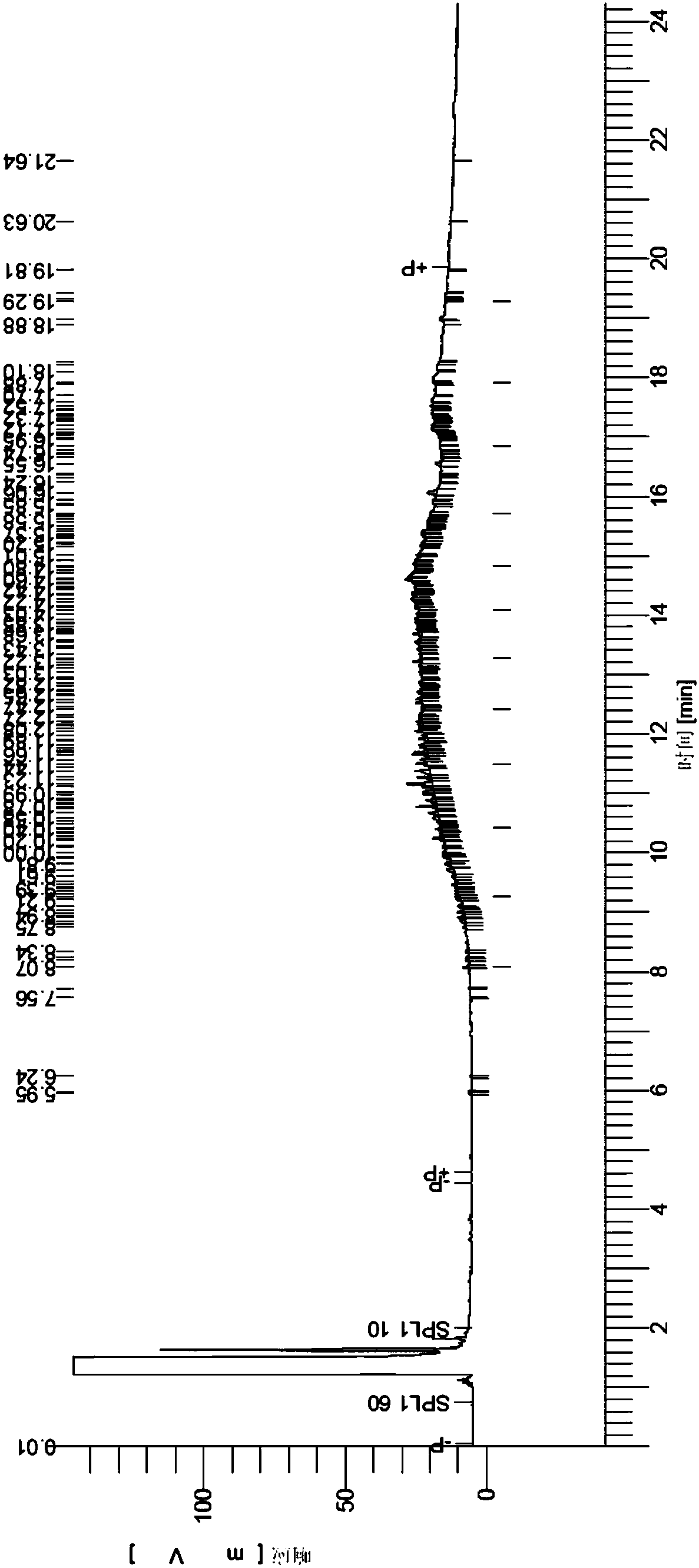Petroleum degrading bacterium, obtaining method and application thereof in crude oil degradation
A technology for oil degrading bacteria and crude oil, applied in the direction of microorganism-based methods, biochemical equipment and methods, bacteria, etc., can solve the problems of long-chain hydrocarbons that need to be improved, and achieve fast degradation, high degradation efficiency, and good degradation effect Effect
- Summary
- Abstract
- Description
- Claims
- Application Information
AI Technical Summary
Problems solved by technology
Method used
Image
Examples
Embodiment 1
[0037] Enrichment and Isolation of Mycobacterium Mycobacteium sp.CSC-6
[0038] (1) On-site collection of oil-contaminated soil near Shengli Oilfield, with crude oil as the only carbon source, to screen out bacteria that can efficiently degrade crude oil. Take by weighing 5g oil sludge sample, add and fill 50mL inorganic salt culture medium (1.00g / L NH 4 Cl, 0.05g / L CaCl 2 , 0.10g / L MgSO 4 .7H 2 O, 1.00g / L K 2 HPO 4 , 1.00g / L KH 2 PO 4 ) in an Erlenmeyer flask at 30°C and 120r / min on a shaker for 7 days. After the culture medium became turbid, pipette 5mL of the culture medium and transfer it into a fresh 50mL inorganic salt medium, and continuously transfer and enrich the culture for 6 times.
[0039] (2) Add 1mL of the culture solution obtained from 6 times of enrichment culture into 9mL of PBS solution, serially dilute it 6 times, and coat the plate with different dilution gradient culture solution, culture in a constant temperature incubator at 30°C for 1-7 days, a...
Embodiment 2
[0042] Degradation performance of mycobacterium Mycobacteium sp.CSC-6
[0043] Use LB medium to expand the culture of strain CSC-6, centrifuge and separate the bacteria after 48 hours, prepare a suspension with PBS and adjust the OD value to 1.0, and inoculate the bacteria solution to a crude oil concentration of 150 at a ratio of 2% by volume. mg / L inorganic salt medium, take the crude oil concentration of 150 mg / L inorganic salt medium that does not contain the strain CSC-6 as a blank, place it on a shaker at 30°C and 120r / min for shaking culture for 1, 3 days, and use n-Hexane extracts the remaining petroleum hydrocarbons. The experimental group and the blank group were analyzed respectively by GC-MS, and the results were as follows: figure 1 As shown, after 1 day of degradation, the degradation rate of C10-C16 in crude oil was 55.44%, the degradation rate of C17-C28 was 45.86%, and the degradation rate of total petroleum hydrocarbons was 48.27%; The degradation rate of ...
Embodiment 3
[0045] Use LB medium to expand the culture of strain CSC-6, centrifuge and separate the bacteria after 48 hours, and prepare a suspension with PBS and adjust the OD value to 1.0, and inoculate the bacteria solution to a crude oil concentration of 300 at a ratio of 2% by volume. mg / L inorganic salt medium, take the crude oil concentration of 300mg / L inorganic salt medium that does not contain the strain CSC-6 as a blank, place it on a shaker at 30°C and 120r / min for shaking culture for 1, 3 days, and use n-Hexane extracts the remaining petroleum hydrocarbons. The experimental group and the blank group were analyzed by GC-MS. After 1 day of degradation, the degradation rate of C10-C16 in crude oil was 23.95%, the degradation rate of C17-C28 was 70.47%, and the degradation rate of C29-C36 was 100%. The degradation rate of total petroleum hydrocarbons was 69.58%; after 3 days of degradation, the degradation rate of C10-C16 in crude oil was 100%, the degradation rate of C17-C28 was...
PUM
 Login to View More
Login to View More Abstract
Description
Claims
Application Information
 Login to View More
Login to View More - R&D
- Intellectual Property
- Life Sciences
- Materials
- Tech Scout
- Unparalleled Data Quality
- Higher Quality Content
- 60% Fewer Hallucinations
Browse by: Latest US Patents, China's latest patents, Technical Efficacy Thesaurus, Application Domain, Technology Topic, Popular Technical Reports.
© 2025 PatSnap. All rights reserved.Legal|Privacy policy|Modern Slavery Act Transparency Statement|Sitemap|About US| Contact US: help@patsnap.com



